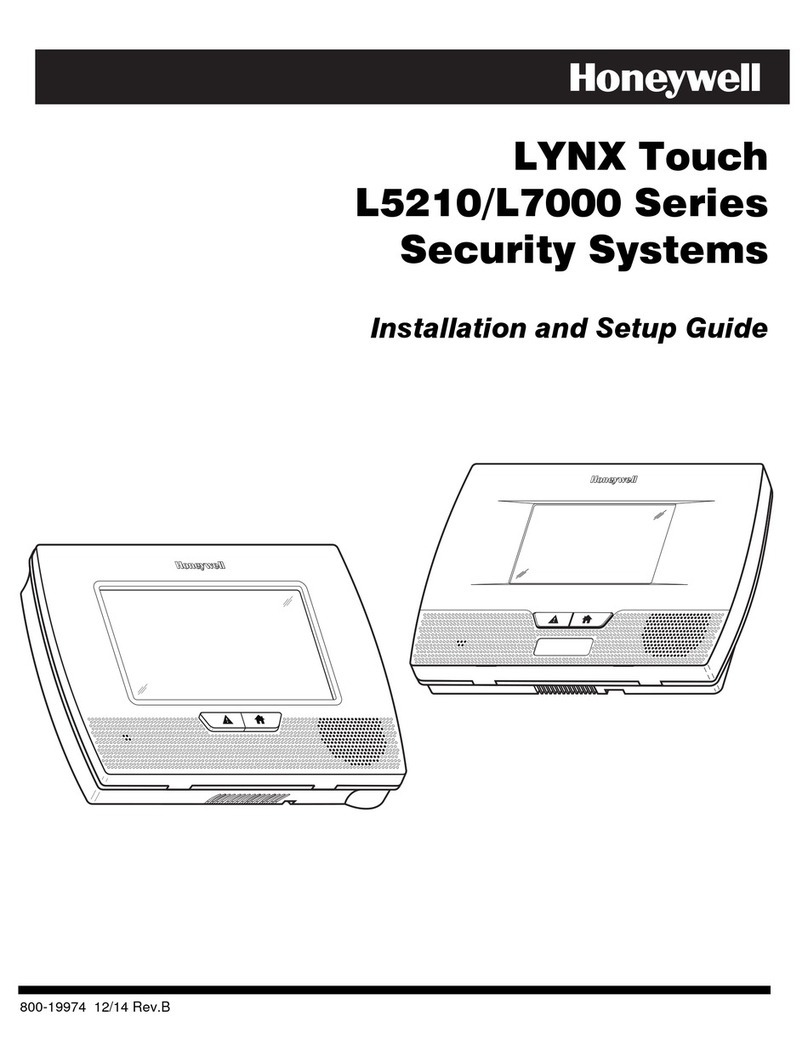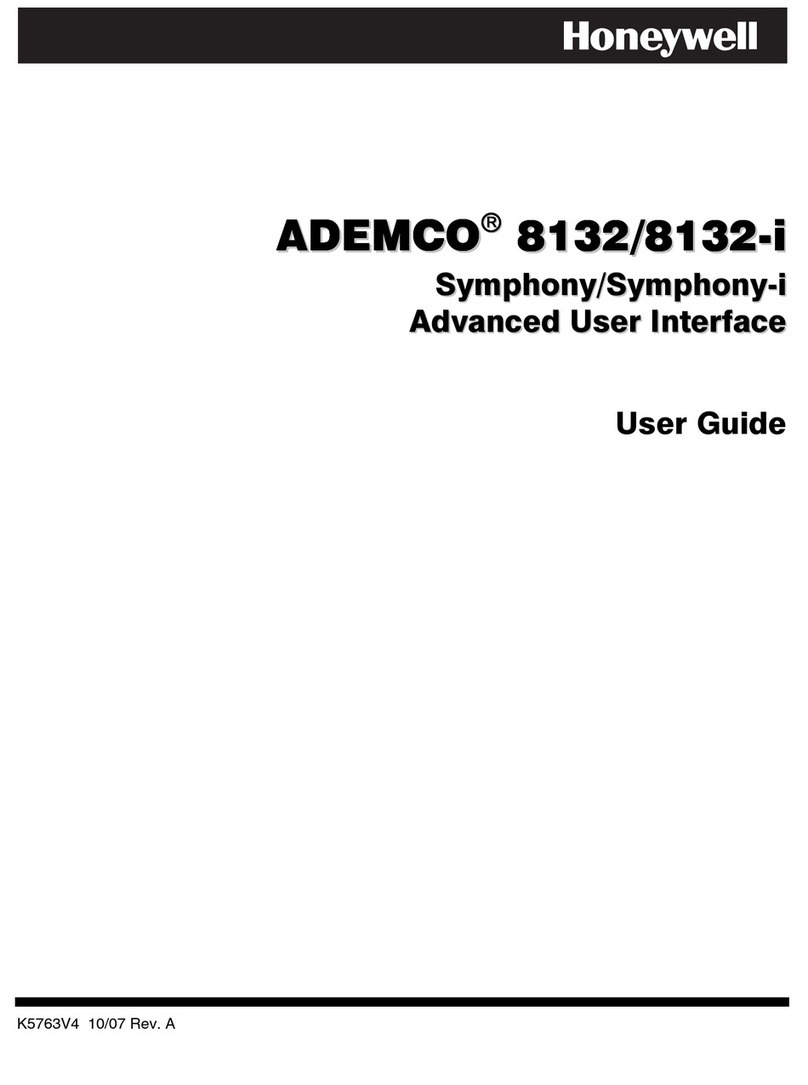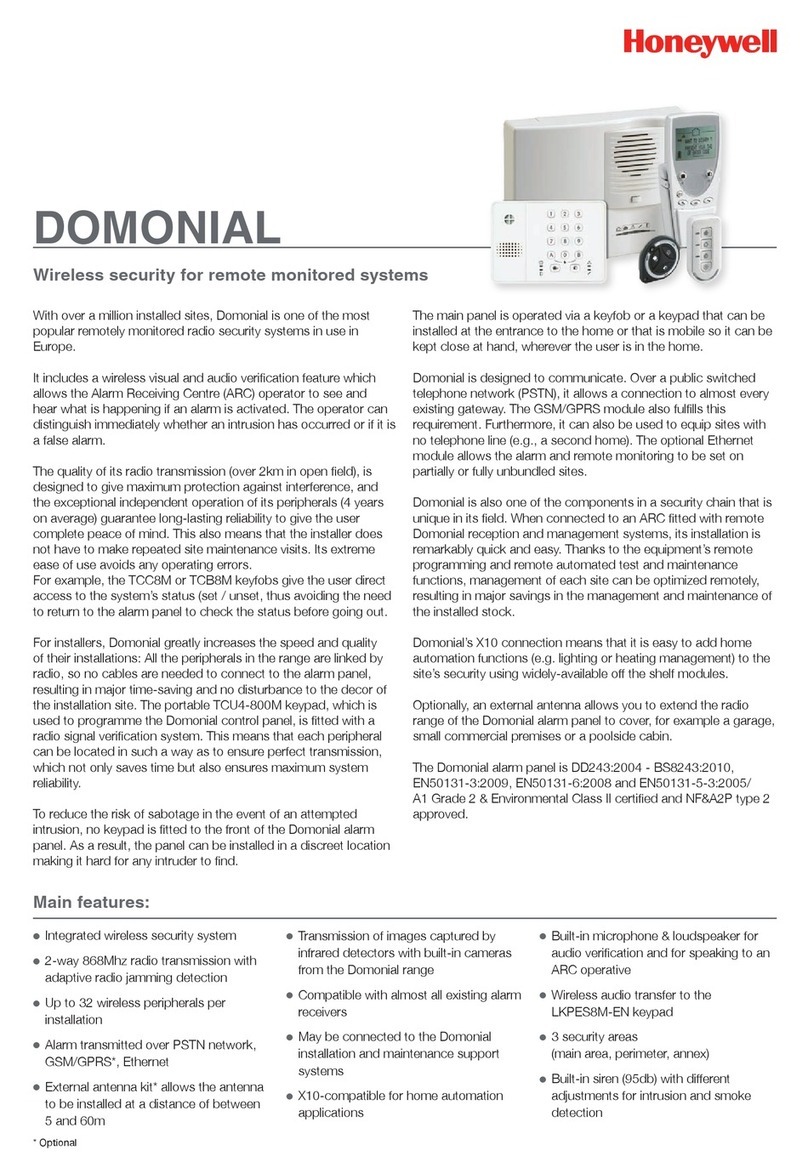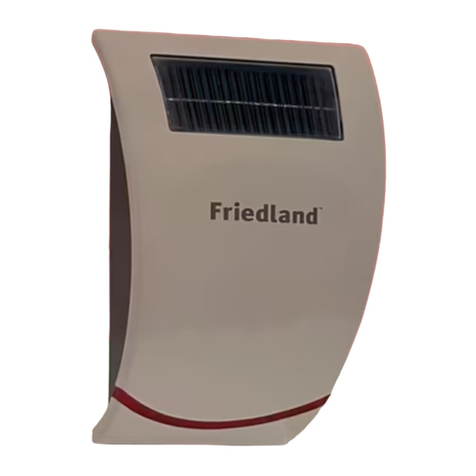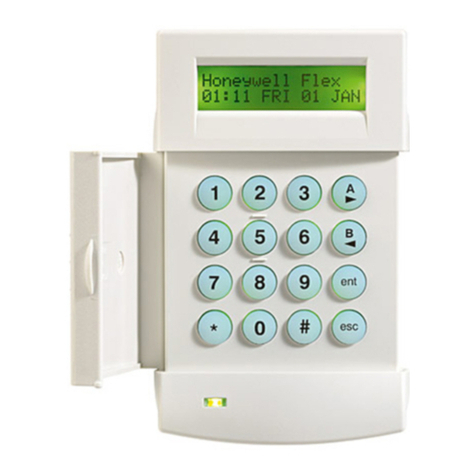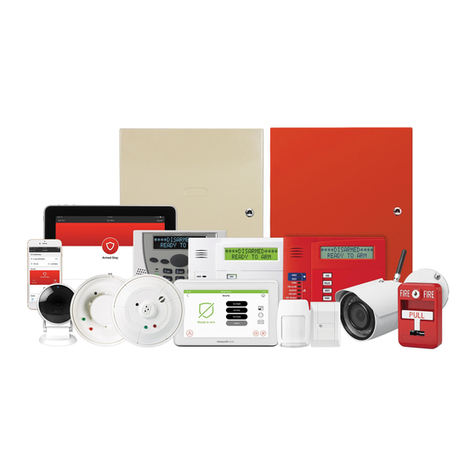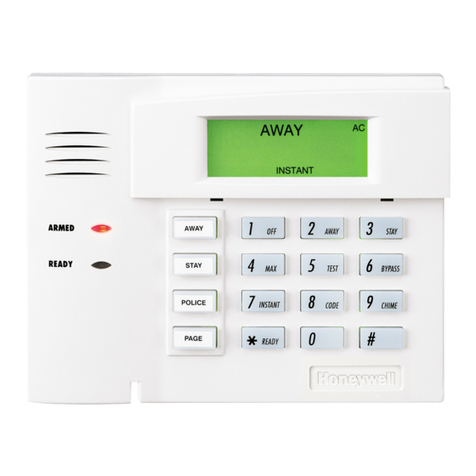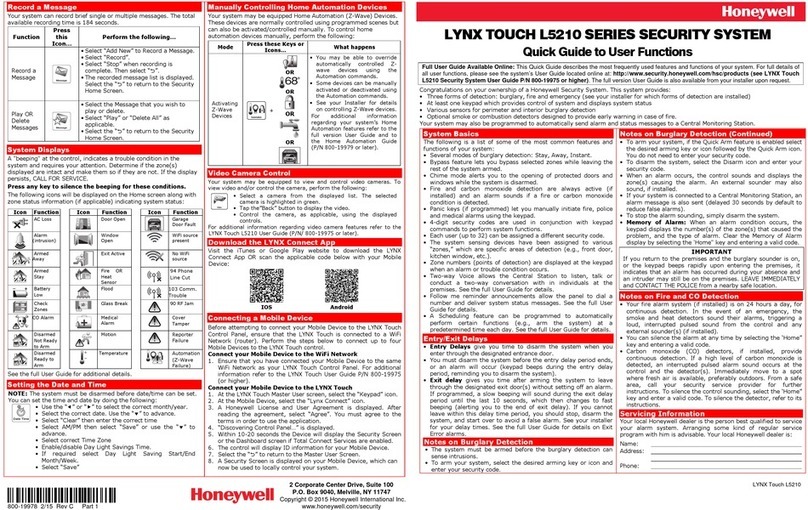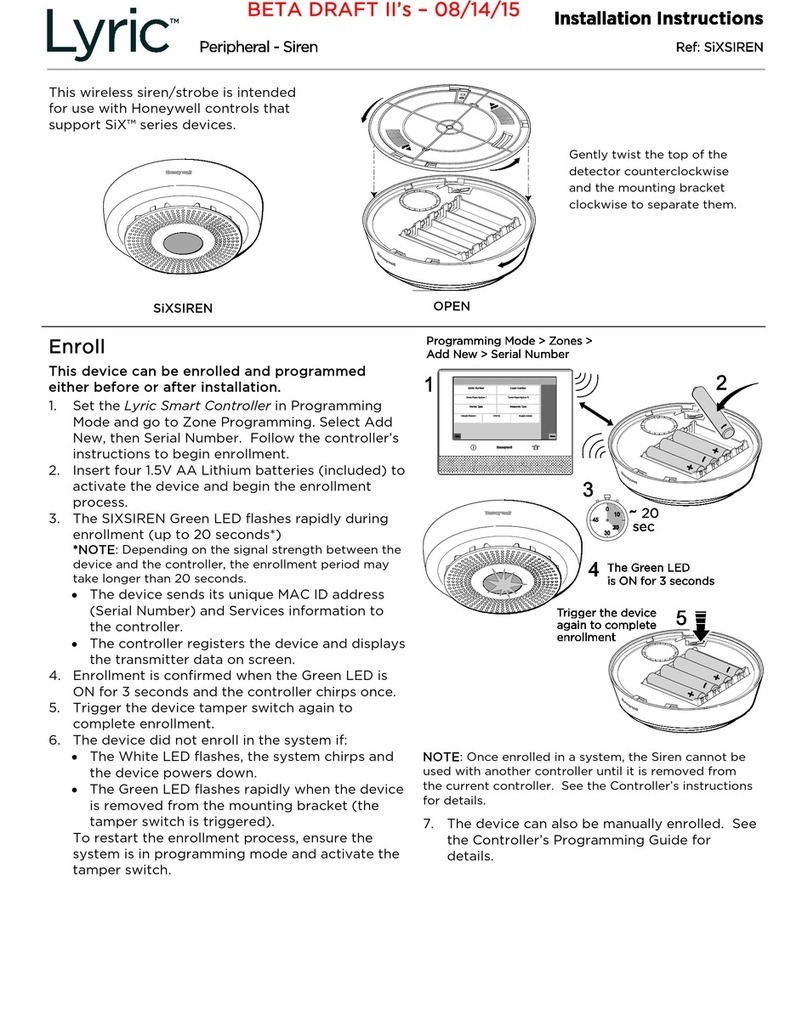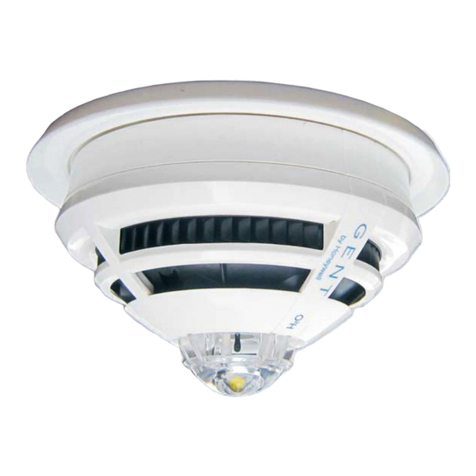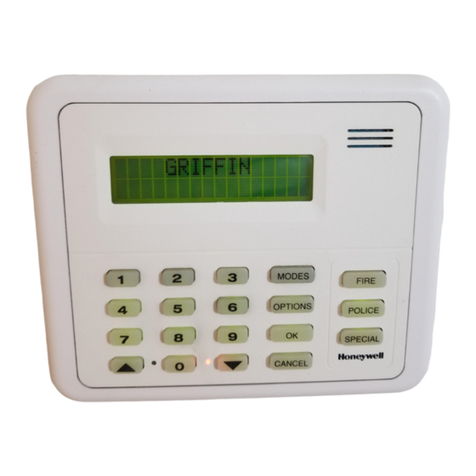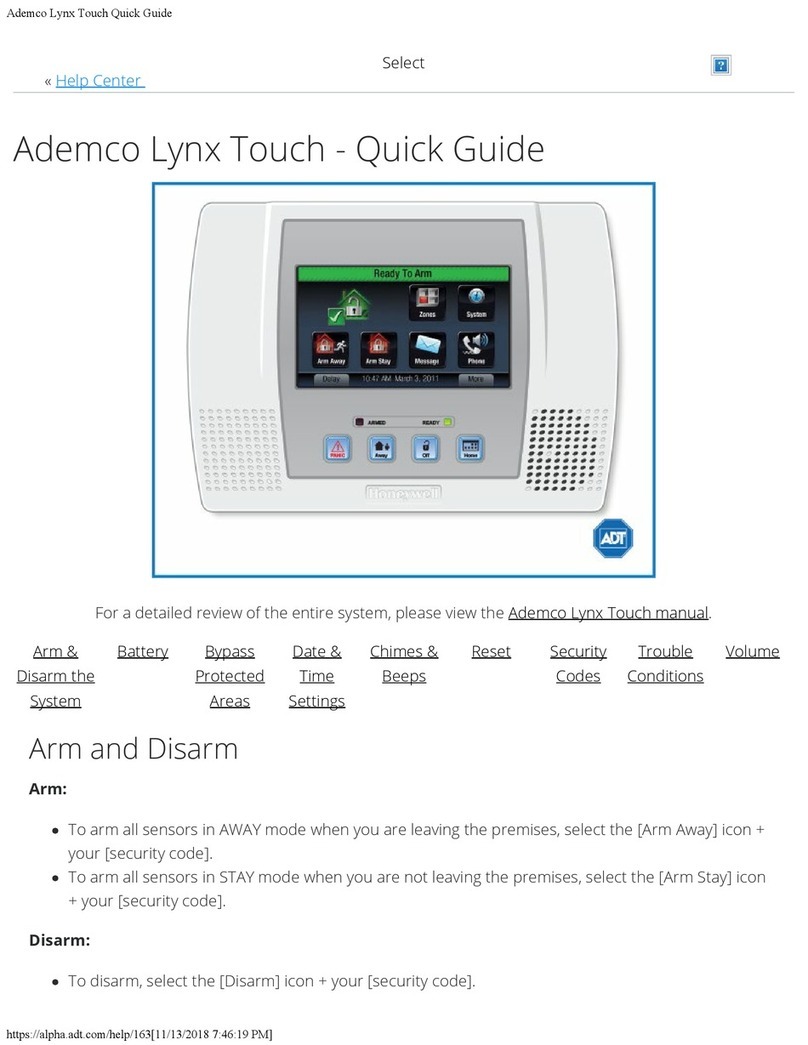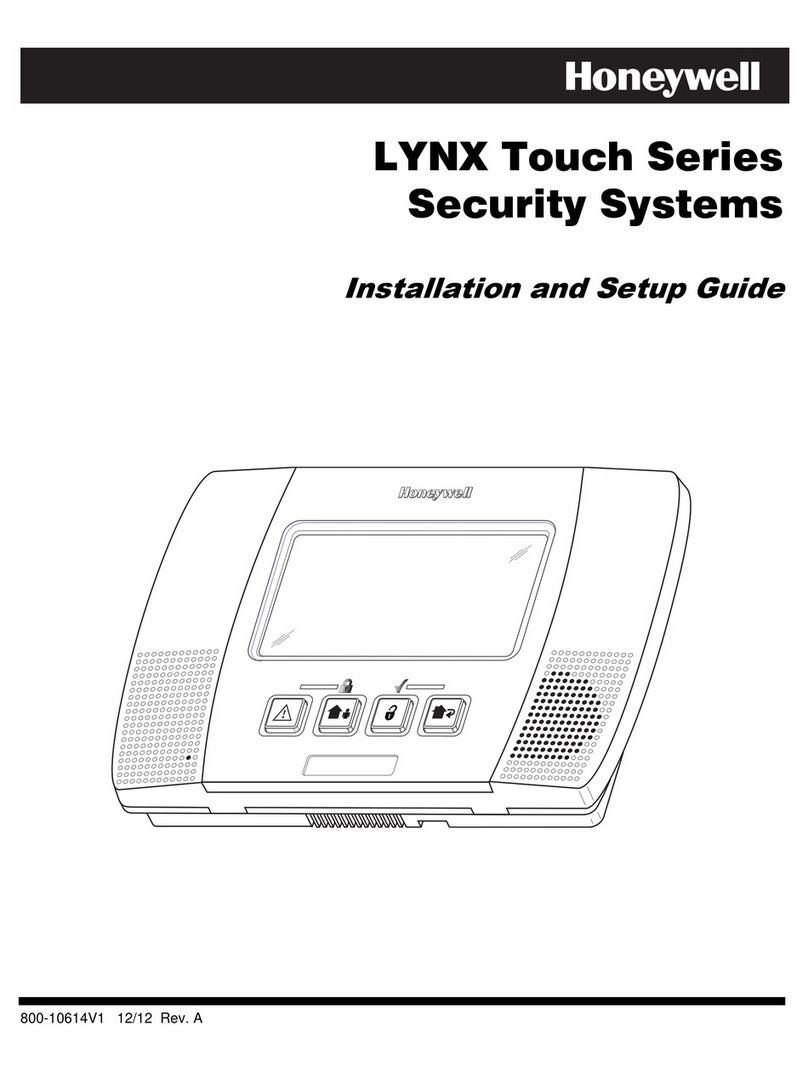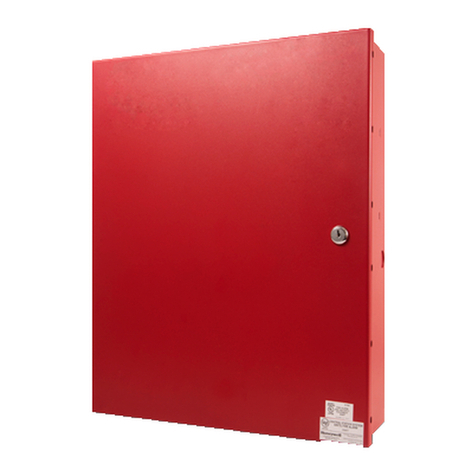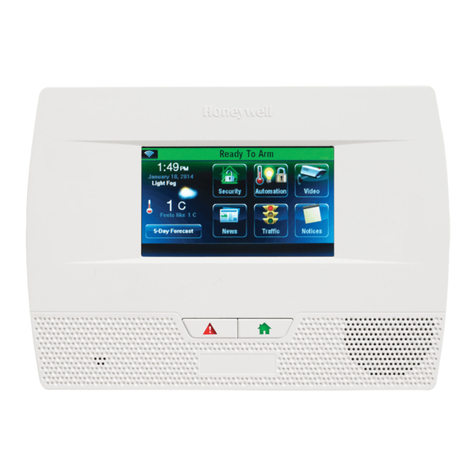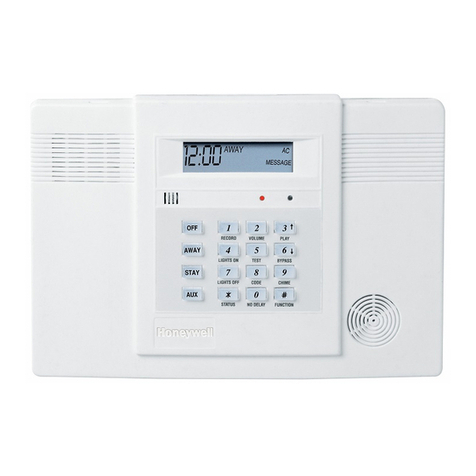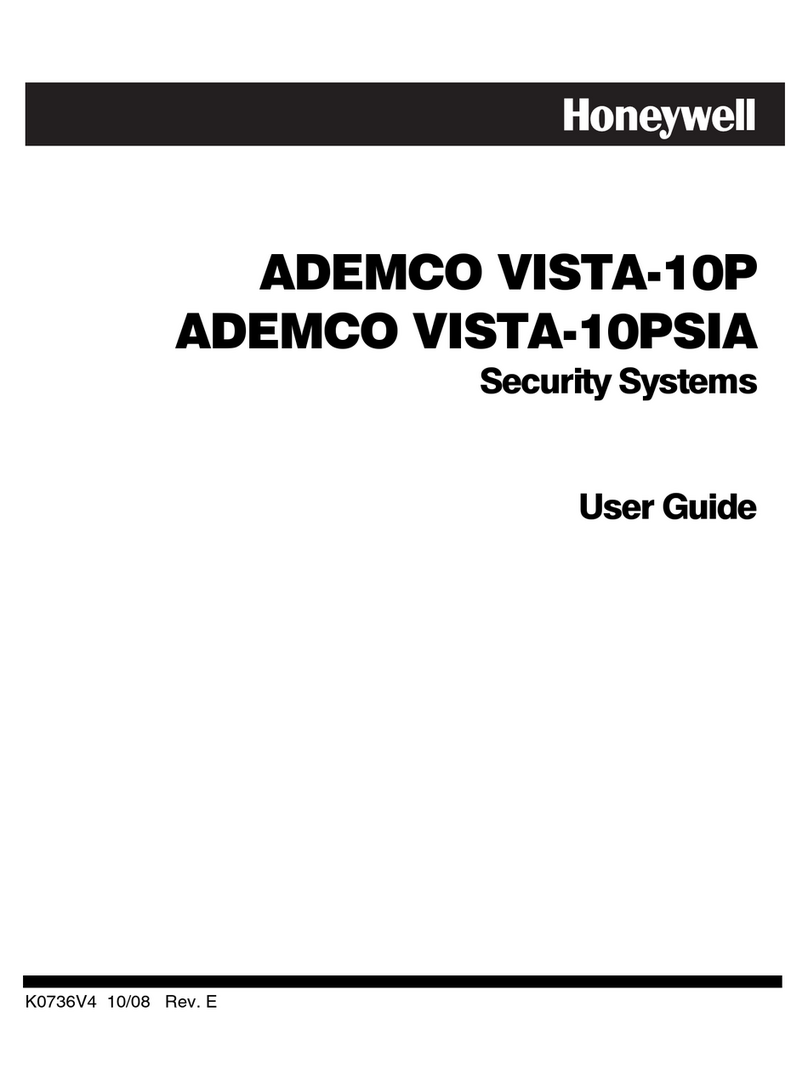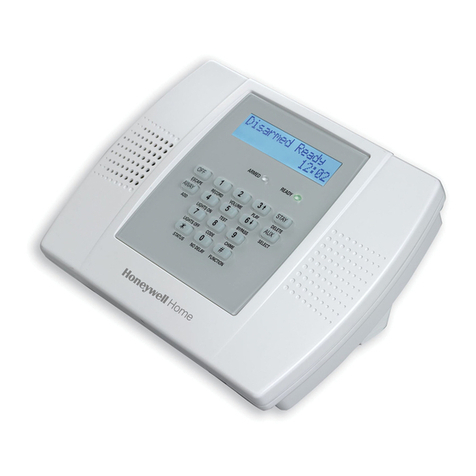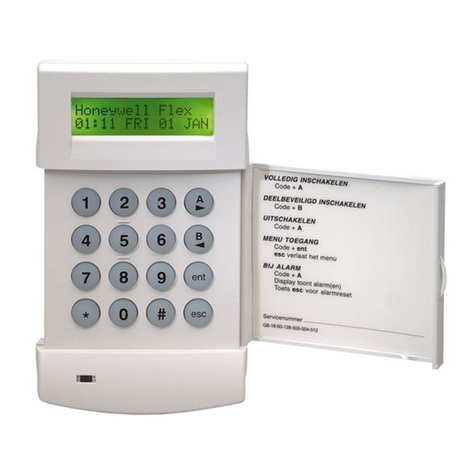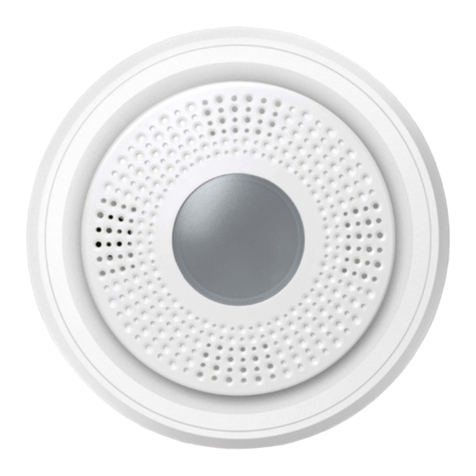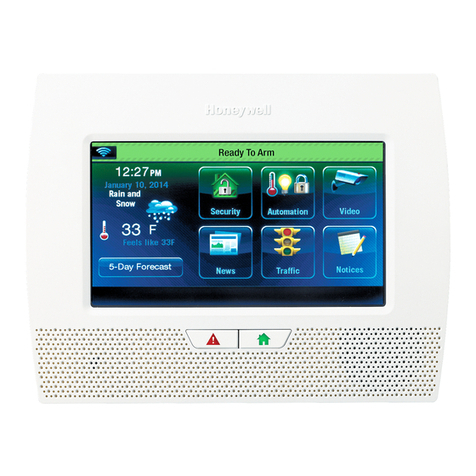
LYNX Touch Installation and Setup Guide
- 9 -
AC Power and Backup Battery
The system is powered by a 9 Volt DC, 2.7 Amp Plug-in Power Supply, 300-04705 or 300-04065 (300-04063
in Canada). Refer to the wiring table below for wire gauge and length. In the event of an AC power loss, the
system is supported by a long life backup battery that is supervised for connection and for low voltage
conditions. If the battery is missing, or a low battery condition is detected, a “low battery” message is
displayed and a report is sent to the central station. In addition, the system will beep once every 45 seconds
to audibly indicate a low battery condition (press any key to stop the beeping).
Use only the provided 300-04705 or 300-04065 (300-04063 Canada) Power Supply. Wiring to the Power
Supply must not exceed 300 feet using 16-gauge wire.
Do not plug the power supply into the AC outlet until after all wiring connections have been made. Ensure the
cover is snapped closed prior to applying AC power
The LYNX Touch is equipped with an integral, replaceable, rechargeable battery pack rated at 7.2Vdc.
Select the appropriate battery pack, based on the installation’s requirement, and install the battery pack.
5000-100-093-V0
OR
RETAINER
SCREW
RETAINER
SCREW
Remove battery retainer.
Insert battery pack into back case.
Route cable through channel (cutout) on left side of
compartment.
Install battery retainer.
Secure battery retainer with the provided screw.
Secure battery wiring in the wire routing clips (3).
Connect the battery connector to the receptacle on the PC
board.
After the wiring connection has been made, snap the front
and the back case closed.
Plug the power supply into a 24-hour, 110VAC unswitched
outlet. Upon powerup, the system will display "Please Wait
Checking System Integrity".
When battery replacement is required, unplug the
transformer from the wall outlet, and open the control panel
cover.
Remove the screw that secures the battery retainer.
Remove the battery retainer and disconnect the battery
pack connector from the receptacle on the PC Board.
Remove the battery pack from the back case.
Install a replacement battery pack (P/N 300-03864-1/
LYNXRCHKIT-SC or P/N 300-03866/LYNXCHKIT-SHA)
into the back case.
Route cable through channel (cutout) on left side of
compartment.
Install the battery retainer.
Secure battery retainer with the provided screw.
Secure battery wiring in the wire routing clips (3).
Connect the battery connector to the receptacle on the PC
board.
After the wiring connection has been made, snap the front
and the back case closed.
Plug the power supply into a 24-hour, 110VAC unswitched
outlet. Upon powerup, the system will display "Please Wait
Checking System Integrity".
Battery Selection
The LYNX Touch is equipped with an integral, replaceable, rechargeable
battery pack rated at 7.2Vdc. Select the appropriate battery pack,
based on the installation's requirement, and install the battery pack.
Battery Part Number Battery StandbyTime Low Battery Notification
300-03866/
LYNXRCHKIT-SHA
300-03864-1/
LYNXRCHKIT-SC 4-hours (minimum) Approximately 1-hour before battery depletion
mfr24-hours (mini um) At least 1-hour be ore batte y depletion
Installing the Rechargeable Backup Battery
Replacing the Rechargeable Backup Battery
1.
2.
3.
4.
5.
6.
7.
8.
9.
1.
2.
3.
4.
5.
6.
7.
8.
9.
10.
11.
BATTERY
CABLE
CHANNEL
BATTERY
WIRE ROUTING
CLIPS (3)
Ensure the control panel assembly is snapped closed
prior to applying AC power. Rechargeable batteries may
take up to 48-hours to fully charge.The "Low Battery"
message should clear within four hours or by entering an
OFF sequence.
BATTERY PACK
(P/N 300-03866/
LYNXRCHKIT-SHA) BATTERY PACK
(P/N 300-03864-1/
LYNXRCHKIT-SC)
